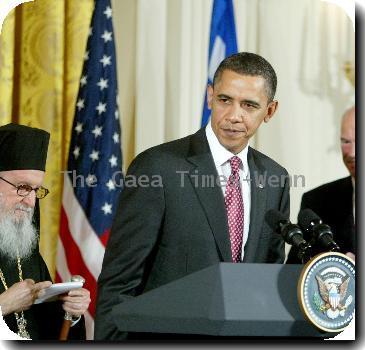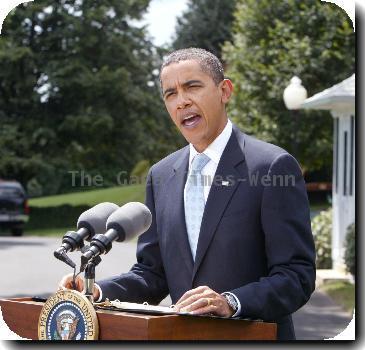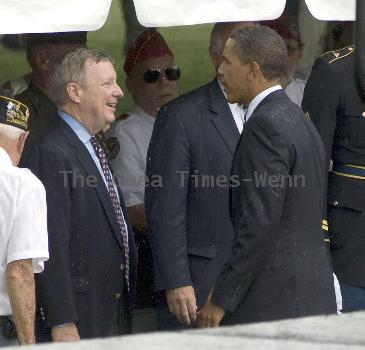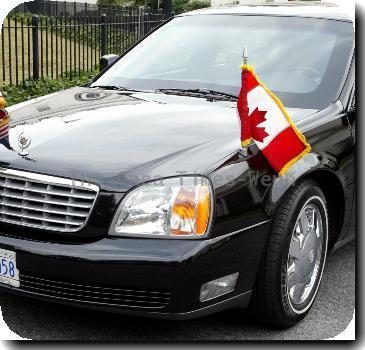SPIN METER: What’s in a phrase? Whoever defines ‘border security’ shapes policy
By Suzanne Gamboa, APWednesday, June 23, 2010
SPIN METER: Defining ‘border security’
WASHINGTON — You wouldn’t know it from the public debate, but the U.S.-Mexico border is more fortified now than it was even five years ago. Far more agents patrol it, more fences, barriers and technology protect it and taxpayers are spending billions more to reinforce it.
Despite those efforts, calls for increased border security are elbowing out cries for an overhaul of U.S. immigration laws and inducing Congress and the administration to spend even more money on border enforcement.
Securing the border remains the prerequisite for any other immigration reforms. That leaves on hold any decision on whether border security might be improved by forcing illegal immigrants to come forward, get background checks and comply with other rules in exchange for legal status. Also pushed aside is any consideration of whether more visas for temporary foreign workers would reduce illegal immigration and make better use of law enforcement resources.
“Once we get the border secured, then we can support a lot of things,” Senate Minority Whip Jon Kyl, R-Ariz., said earlier this month. “Until then, it’s going to be very difficult.”
That sentiment is shared by both Democrats and Republicans this election year.
But border security is in the eye of the beholder. There’s no agreed-on definition of what constitutes a secure border and no budget for how much more to spend to achieve it.
Is it when the entire southern border of nearly 2,000 miles is fenced, or double-fenced? Is it when illegal immigration arrests are at zero or close to it? Is it when everyone who crosses the border can be identified? Is it when Army troops are sent to the border, as they were after Mexican revolutionary Pancho Villa raided a New Mexico border town in 1916, or when the number of Border Patrol agents has quintupled?
The White House will lay out plans for more border reinforcements when administration officials meet with Gov. Jan Brewer in Arizona June 28.
President Barack Obama already has called for 1,200 National Guard troops in support roles, along with at least another $500 million in spending on border security. For President George W. Bush, the number of Guard troops was 6,000. A Texas congressman has said no fewer than about 25,000 will do the job.
“One of the questions I think we need to talk about is whether securing the border is ever going to be reached … in the sense of the Congress,” Homeland Security Secretary Janet Napolitano told members of a Senate committee at a hearing in April, “or whether that goal post is just going to keep moving.”
The rush to secure the border has gone awry at times. Amid similar demands for ramped-up security in 2006, Congress contracted with Boeing Co. for an electronic “virtual fence.” A sweeping immigration overhaul bill was stalled in Congress at the time.
The fence of cameras, radar and other technology has been plagued with problems and delays. It has cost at least $15 million for 53 miles of electronic barrier.
Some border security that has been achieved in recent years:
— The number of Border Patrol agents has doubled to more than 20,000 since 2003, with most of those agents stationed at the U.S.-Mexico border. The Border Patrol’s budget has grown from $1 billion in the 2000 fiscal year to a requested $3.58 billion for 2011, according to the Congressional Research Service.
— The combined budgets of two agencies — Customs and Border Protection and Immigration and Customs Enforcement — total about $17 billion after steady increases in funding in recent years.
— The U.S. has erected about 510 miles of fences and vehicle barriers on the nearly 2,000-mile southern border since 2006, adding to about 137 existing miles of fences and barriers built in previous years.
— Americans returning from Mexico and Canada now must show passports to cross the border and enter the U.S., under rules that took effect last summer.
Obama’s administration has moved immigration investigators to the border and begun inspecting southbound train cargo to help stem cash and weapons flowing to Mexican drug cartels.
“I think people simply don’t understand how much has been done in recent years, particularly over the last five or six years, but somewhat going back into the mid-’90s,” said Edward Alden, author of “The Closing of the American Border.”
That’s a result of the demand for increased border security, but Border Patrol Chief Michael Fisher said border security isn’t an all-or-nothing proposition. At a recent hearing, he said the border and threats on it are dynamic and security must be, too. A portion of the border could have high levels of security, including fencing, but then face new threats from people using tunnels or ultralight planes to cross illegally, Fisher said.
So far, border security has been addressed incrementally.
A compromise between those who want eased immigration and those advocating security first could mean trade-offs that benefit both sides. For example, employers might be persuaded to check the legal status of their employees in exchange for a visa program that ensures they have a stable work force.
While improving border security persists as the priority, the population of undocumented immigrants in the U.S. remains unidentified and unknown.
Associated Press writer Ileana Morales contributed to this report.
Tags: Barack Obama, Border Security, Central America, Latin America And Caribbean, Law Enforcement, Mexico, North America, United States, Washington



